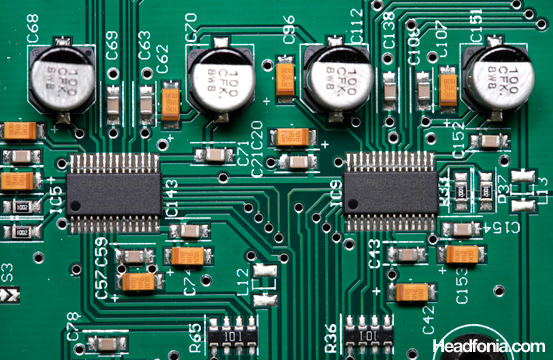Any BDA-1 processor possessors out there ?
Currently investigating modding a BDA-1 for a friend.
Unfortunately, Bryston obfuscates much of their topology by unobtanium service manuals and schematics. Which is the exact opposite situation of major players like Philips and Sony.
The Bryston BDA-1 d/a processor (released late 2009) is contains two Cirrus Logic CS4398 dac chips. Each CS4398 is a dual-differential device that outputs L and R stereo channels.
The Audiocircle site has the official Bryston forum. There, officials from Bryston can comment on their products. For the BDA-1, they claim each 4398 is used per channel.
The company's sales literature on this product notes its use of "Dual 192K/24Bit Crystal DAC’s"
You can browse thru some of the of the device's manuf literature here:
https://www.hifiengine.com/manual_library/bryston/bda-1.shtml
The BDA-1 is the only digital device (CD player or d/a processor) that uses 2xCS4398
See https://www.dutchaudioclassics.nl/the_complete_d_a_dac_converter_list/
... and CTR+ F for "CS4398". Every other device on this fairly comprehensive list uses only one CS4398.
Unlike some of Cirrus Logic's competitors (Wolfson TI, AD), the Cirrus dac is not capable of mono-mode. So it can't be used, as a single device, to output a dual-diff mono channel (e.g., L or R). In fact, no Cirrus/Crystal dac -- ttbomk -- ever featured a mono mode including the 4398's immediate ancestor, the 4397.
So either it is stacked or Bryston is using only one of the two provided channel outputs (e.g., AOUTA- , AOUTA+ ) It's like using using two stereo amps for "dual mono". You feed the preamp L to one stereo amp and preamp R to the other stereo amp. So ... one of the stereo amp channels is left dangling and never used. This can be done but it's rare.
Actually, there is one more possibility for the dual CS-4398 use: one for std outs; the other for balanced outs. If you look at the photos of the PCB, this looks like the most likely scenario.
Why all the fuss? Well, If a respected long-time high-end manuf can make such claims -- honest mistake or deliberate marketing hype of "dual dac chips " -- what / who else is pulling our legs with similar claims?
Or did Bryston ACTUALLY work out how to get the CS4398 to output a dual-diff mono signal for each chip?


